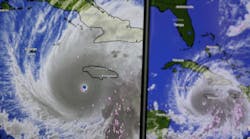Pittsburgh-Area Park to Serve as Storm Water Model
As Pittsburgh, Pa., deals with a recent round of thunderstorms, the local nonprofit organization 3 Rivers Wet Weather Inc. awarded neighboring township North Fayette $232,000 to build park facilities with runoff-reducing materials.
The grant will help the township fund a $2 million, 34-acre park project planned for next spring. Compost-enhanced, permeable sports fields and 6,000 ft in pervious pavement fitness trails are major aspects of the design.
"We're going to build what we planned to build; we're just going to build it in a slightly different way, to make it better able to drain," said Bob Grimm, township manager.
Parking lots within the park area will feature water detention and drainage aspects, and a couple of buildings will collect rainwater in barrels, automatically drawing it into an underground filtration system. Grimm said the storm water management techniques as a whole will increase building costs by about $10,000.
"Given the hills and valleys we have in the township," he said, "the more water that can be absorbed into the ground on the site, the less problem that we are going to have of water running off development onto somebody else's property."
John Schombert, executive director for 3 Rivers Wet Weather, said the ultimate goal of the project is clean water for everyone. The Allegheny County Sanitary Authority and Allegheny County Health Department joined to form 3 Rivers Wet Weather in 1998 to help municipalities limit sewage overflows and maintain federal Clean Water Act compliance.
Schombert said the new park will serve as a model of workable storm water controls, as laid out in the 2006 Pennsylvania Storm Water Best Management Practices Manual. "We don't have a lot of examples around here to show people," he said. "[But in North Fayette] we can have a number of different technologies to show in one place."
Signs describing the park's storm water controls will be posted throughout the park to enhance tours for developers, engineers and government officials.
"We actually want to see how they work before we impose regulations on somebody else," said Grimm. "[When we eventually] start changing our storm water regulations over to incorporate these best practices, we can point to our own facility and say, 'this is what we're doing, come on up and look.'"
Source: Pittsburgh Post-Gazette

